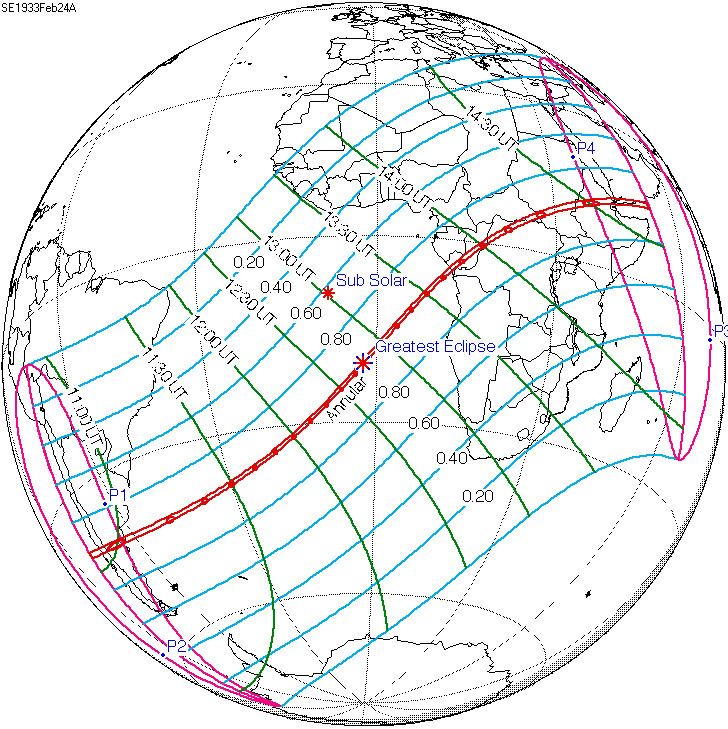Nature Annular Magnitude 0.9841 Max. width of band 58 km (36 mi) | Gamma -0.2191 Duration 92 sec (1 m 32 s) Greatest eclipse 12:46:39 | |
 | ||
An annular solar eclipse occurred on February 24, 1933. A solar eclipse occurs when the Moon passes between Earth and the Sun, thereby totally or partly obscuring the image of the Sun for a viewer on Earth. An annular solar eclipse occurs when the Moon's apparent diameter is smaller than the Sun's, blocking most of the Sun's light and causing the Sun to look like an annulus (ring). An annular eclipse appears as a partial eclipse over a region of the Earth thousands of kilometres wide.
Contents
Solar eclipses of 1931-1935
Each member in a semester series of solar eclipses repeats approximately every 177 days and 4 hours (a semester) at alternating nodes of the Moon's orbit.
Saros 129
It is a part of Saros cycle 129, repeating every 18 years, 11 days, containing 80 events. The series started with partial solar eclipse on October 3, 1103. It contains annular eclipses on May 6, 1464 through March 18, 1969, hybrid eclipses on April 8, 2005 and April 20, 2023 and total eclipses from April 30, 2041 through July 26, 2185. The series ends at member 80 as a partial eclipse on February 21, 2528. The longest duration of totality was 3 minutes, 43 seconds on June 25, 2131 .
